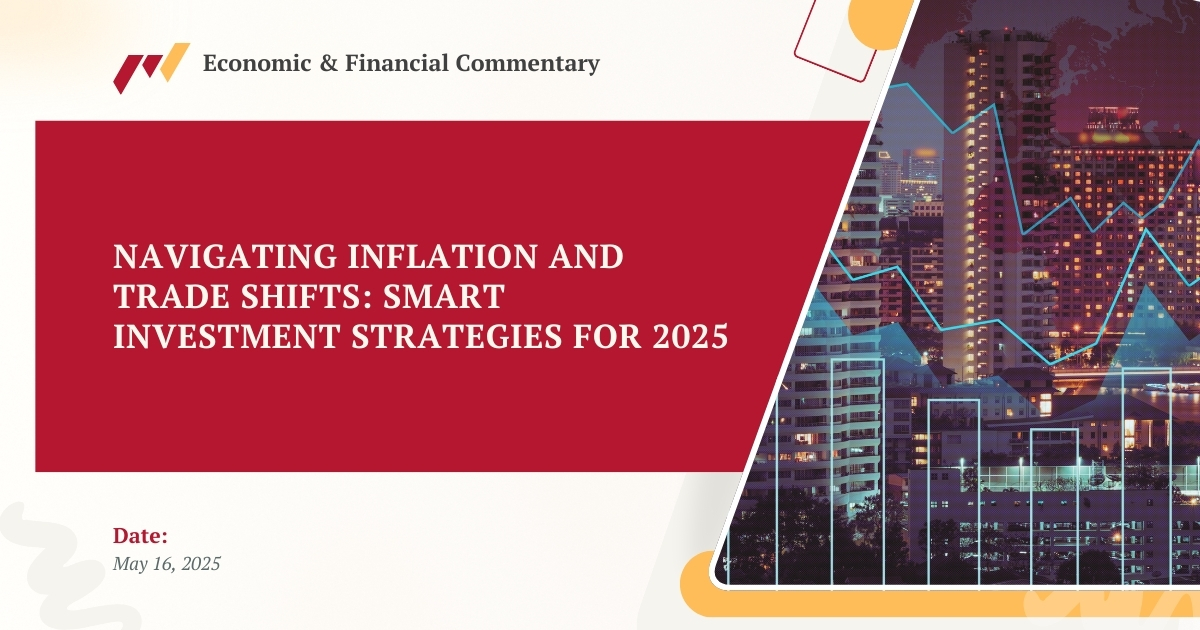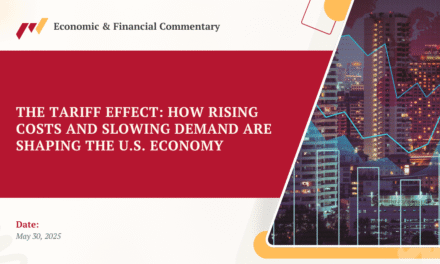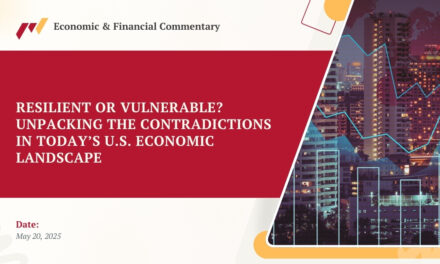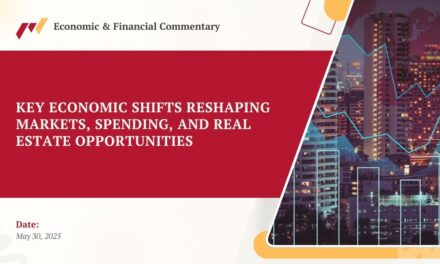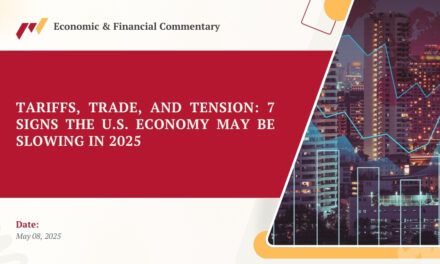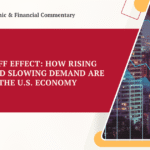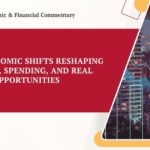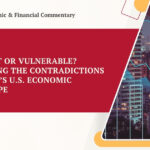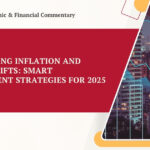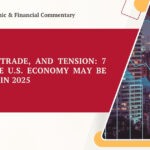As 2025 unfolds, headlines continue to highlight rising inflation, slowing GDP, and escalating trade tensions. These narratives can understandably trigger fear among investors and business owners. However, economic data and historical patterns reveal that panic is not only unnecessary but potentially harmful. Instead, this is a moment to make strategic, informed investment decisions.
Inflation: A Natural Part of the Economic Cycle
Inflation is not inherently a sign of economic distress. It often emerges from natural shifts in supply and demand, rising input costs, or government policy changes such as tariffs or taxes.
In today’s context, the inflationary pressure we’re witnessing is largely policy-driven, not due to excessive demand. Consumers accelerated purchases ahead of known tariff deadlines, temporarily distorting economic indicators. This behavior reflects short-term adaptation, not structural failure.
Key Drivers of Current Inflation:
- Policy-induced price adjustments
- Supply chain realignments
- Temporary demand spikes
What the Latest Data Says (Wells Fargo Economic Commentary, May 2025)
- Job Market: April 2025 added 177,000 jobs—above forecasts
- GDP: Q1 GDP contracted slightly, primarily due to a pre-tariff import surge
- Consumer Spending: Spiked in March ahead of April 2 tariffs, especially on vehicles
- Economic Sentiment: Current unease is more perception-driven than data-driven
In short, the U.S. economy continues to spend, hire, and grow. Current challenges are tactical, not systemic.
Trade Tensions: Political, Not Permanent
Introducing 25% tariffs on auto imports is rooted more in political manoeuvring than in economic necessity. Relief provisions, including duty reimbursement schedules, signal that adjustments are already underway. New deals or rollbacks often follow these temporary trade measures.
Investor Tip: Expect volatility around trade policy, but avoid overreacting. Tariffs may be today’s problem and tomorrow’s opportunity.
Smart Investment Moves in 2025
Investors should prioritize discipline, liquidity, and real-value assets to navigate this economic landscape.
Stay Invested for the Long Term
- Market timing rarely outperforms steady investment
- Use volatility as an entry point, not an exit strategy
1. Prioritize Inflation-Resilient Assets
- Real estate
- Dividend-paying stocks
- TIPS (Treasury Inflation-Protected Securities)
2. Maintain Liquidity (Dry Powder)
- Be ready to capitalize on undervalued assets during market dips
3. Focus on Business Fundamentals
- Strong cash flows, low debt, and essential services indicate resilience
4. Seek Professional Guidance
- Advisors can help navigate the interplay of interest rates, policy, and market cycles
Optimism Is a Financial Asset
The Fed is exploring rate cuts, and consumer behaviour is adapting to new price baselines. These signs point to a potential rebound in late 2025. Remaining calm and informed can help investors turn uncertainty into opportunity.
Why Commercial Real Estate (CRE) Makes Strategic Sense
During economic uncertainty, tangible assets like commercial real estate offer unique benefits:
Benefits of CRE:
- Stability: Long-term leases provide steady income
- Inflation Hedge: Rents and property values often rise with inflation
- Diversification: CRE balances a portfolio by reducing exposure to market volatility
Spotlight on Houston’s CRE Market
Houston remains a stronghold for commercial real estate investment:
- $92.5 Billion Deployed in Q1 2025: A 17% increase YoY (The Business Journals)
- Industrial Growth: Vacancy rates at 5.6%; rents up 43.3% since 2018
- Development Projects: Massive developments like Briarley (700 homes) are fueling regional expansion
Land Investment: Long-Term Strategy
Buying land for future development is another powerful strategy:
- Appreciation: Land in high-growth areas increases in value
- Flexibility: Options to develop or resell
- Tax Advantages: Possible savings in certain regions when holding undeveloped land
Houston: A CRE Investment Powerhouse
- Population Growth: Outpaces national averages
- Diverse Economy: Strong in energy, healthcare, and tech
- Infrastructure Boom: $2B expansion of George R. Brown Convention Center enhances investor appeal
Final Thoughts
The headlines may sound alarming, but a deeper look at the numbers reveals a more nuanced story. For investors focused on long-term gains, 2025 offers a chance to realign strategies and embrace resilient, value-based assets like commercial real estate. With its growth trajectory and diverse economy, Houston stands out as a prime market. Paired with a disciplined, informed investment approach, opportunities abound for those willing to ride the economic tide, not run from it.

